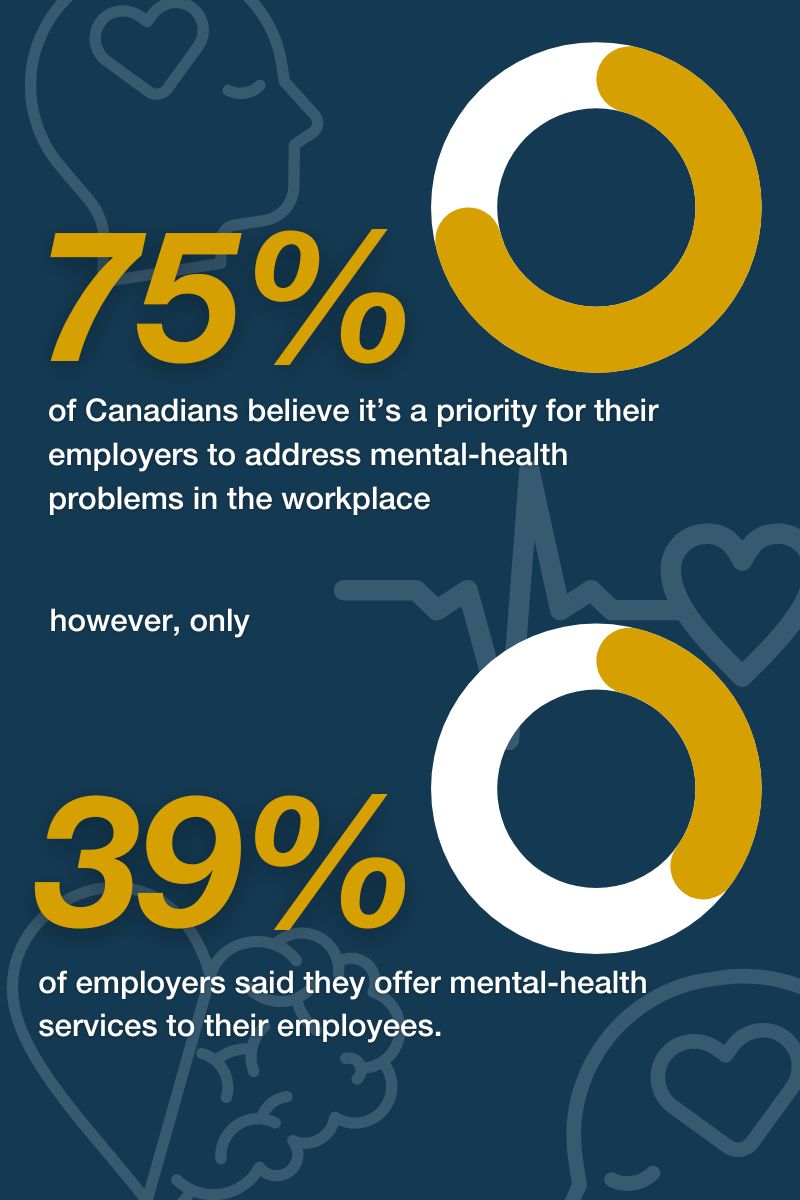Latest HR News and
Recruitment Trends
Reading time: 5 mins
The latest in HR news and recruitment trends: The unemployment rate in Canada is currently at 6.1%, which translates to roughly 1.4 million Canadians (Statistics Canada). Regionally, the Calgary unemployment rate reached 6.5% in March, and the Toronto unemployment rate is currently at 7.5%.
Despite the number of people seeking employment, some companies are still struggling to fill positions. 61% report that filling open jobs remains challenging, according to TEC’s CEO Confidence Index.
Many options are available for organizations to maximize their results, from compensation to health benefits and employee development. The following trends, research, human resources news, and suggestions come from a special HR trends report prepared by one of Canada’s largest independent recruitment firms, Altis Recruitment, along with various employee engagement surveys.
Compensation Trends and Suggestions

48% of Canadians reported they’ve never been more stressed out about money. In another labour force survey, 40% said pay and rewards programs are the most important factor in deciding whether to stay with their employer.
In 2023 there was an average salary increase of about 3%. This is below the average inflation rate of nearly 4% for 2023. According to the Conference Board of Canada, expect an average wage increase of 3.5% in 2024 for non-unionized employees (down from 4.1% in 2023).
As the cost of living increases, people are favouring higher base salaries and place more value on stable, dependable roles. Businesses may have to raise prices to keep up with these higher salary expenses, creating a wage-price spiral. As a business leader, if raising salaries isn’t an option, there are still ways to encourage employee retention:
- Cost of living bonuses
- Performance-based increases
- One-time retention bonuses
- Non-financial incentives, such as one week of vacation
- Promotions, skills building, investment in learning and education
- Wage increases only in high-demand areas like specialized IT
- Offering a financial planner or financial planning tools as people struggle with finances, or helping recent grads pay off student loans
On the employer side of current trends, some layoffs and restructurings are happening, but they are then hiring for experience/skills at higher compensation rates; generalists are being replaced by specialists.
Current Recruitment Trends and Suggestions
To attract Gen Z and Millennials, consider highlighting your openness to AI. These generations want to experiment with new tools and technologies. Be prepared to ask them how they use AI in their work, and explain how your organization plans to use it in the future.
Also, let candidates know that you are a family-friendly employer. Show that you support those having families and caring for others. This could include being open to career development and advancement oportunities for women who are pregnant, or you provide mat leave top-ups and subsidies for fertility treatments.
One option to attract millennials is to offer remote work. This is the generation that wants remote work the most, according to Stanford research. This age coincides with the period when many people have small children at home, which could be a factor. Also, one study found their commute distance has more than doubled since before the pandemic, so they are less enthusiastic about returning to the office.
To attract Gen Z employees, consider offering hybrid work options. They like to be in the office some of the time, but generally don’t like strict in-office mandates. Data from Gartner suggests companies that make office attendance optional have a 10% higher engagement rate among Gen Z than those that mandate it.
Health and Wellness in the Workplace

75% of Canadians believe it’s a priority for their employers to address mental health problems in the workplace. However, only 39% of employers said they offer mental health services to their employees, such as flexible scheduling and wellness activities. Companies that take measures to support employee wellbeing have seen their productivity improve by an average of 13%.
One solution could be to encourage people to take time off. This could be under health and wellness days, vacation days or, as Altis offers, flex days—additional paid days per month for employees to balance work priorities with life priorities (i.e., appointments, errands, and childcare).
Beware of well-being washing; talking about burnout without implementing strategies. Actions like offering yoga but no time to do it or encouraging people to go on walks but not decreasing their workloads.
On the leadership development front, consider training leaders to be empathetic and ask about mental health and wellbeing regularly. You can also implement training on how to handle job stress. Boston Consulting Group found that 61% of employees do not receive coaching on how to handle job stress and 65% lack access to programs to prevent burnout.
Lastly, be sure to clarify what mental health support you offer and where to find it. 80% of those surveyed by Boston Consulting Group said they had trouble accessing mental health resources offered by their company.
Learning and Leadership Development
Focus on continuous skill enhancement. Leaders see learning and development (L&D) as a means to upskill (53%), drive employee performance (50%), and keep employees engaged (50%); however, only 1 in 5 employees agrees. Consider training new hires on a couple of different roles—like recruitment and account management, so they have the skills required to move if the market shifts.
As a general consensus, businesses are struggling to find and retain skilled tech talent, particularly cloud computing specialists (41%), those with an AI background (27%), and security architects (25%). One option for rectifying this could be to hire skilled contractors to upskill permanent employees. For example, hire a contract chief information officer to help your team grow their talents. This can also be a viable strategy for leaders to develop their soft skills, by outsourcing coaches or enrolling them in a TEC KEY or CEO membership.
Or, to fill roles, consider offering a “white-collar apprenticeship program” to hire people who have neither industry experience nor a four-year degree, and then train them in a field such as cyber security or accounting. Look for people with the right inclinations, drive, and learning abilities. This helps with adding diverse perspectives as you can hire from underrepresented groups. It also helps with retention as apprentices make for long-tenured employees.
Working From Home and Return to Office Trends

As of October 2023, 20.1% of Canadian workers were working exclusively at home, a drop from 22.4% the year prior. Of those with flexible working arrangements, 60% reported working remotely full time – a decline from 75% in 2022. There may be fewer shifts in flexible arrangements over the coming year.
In a recent Hybrid Work Study conducted by Cisco, 81% of Canadians stated that flexible work policies impact whether they stay at or leave a job. This is reinforced by Indeed.com, who determined that postings mentioning hybrid work were filled in 5% fewer days.
If you opt for fully onsite, be intentional about the reason to come to the office is to collaborate as a team. Organize in-person job shadowing, team brainstorming sessions, in-person one-on-ones, and celebrates wins together.
As society and the economic climate continue to change, as well as the values and culture of our youngest generations, workplaces and recruitment strategies will have to change as well. For an in depth perspective on how master talent acquisition, access our whitepaper paper on Building Talent Tenacity.




